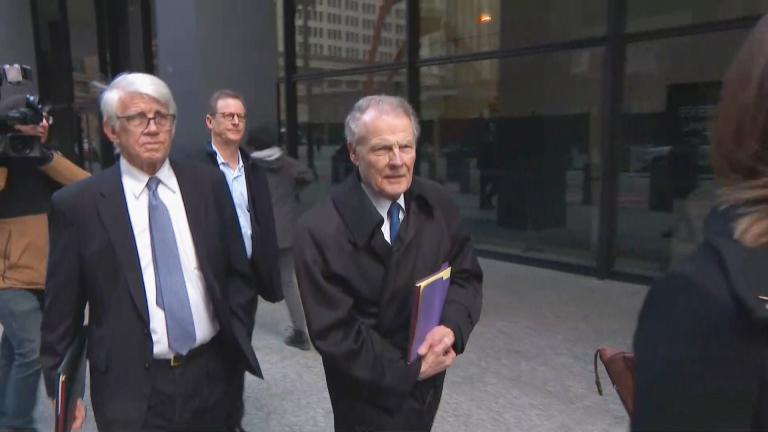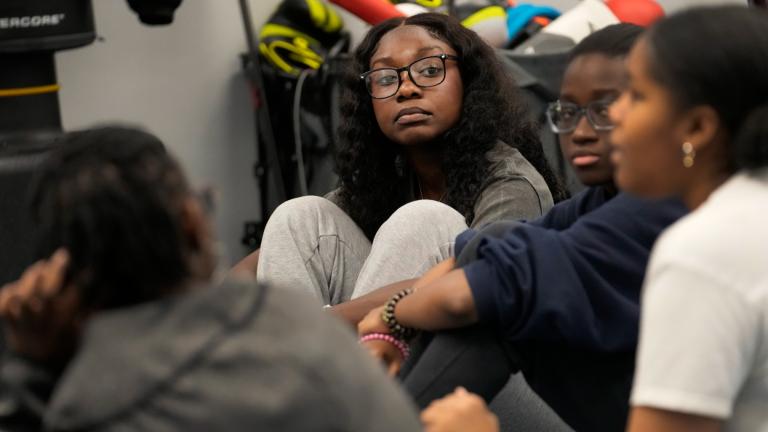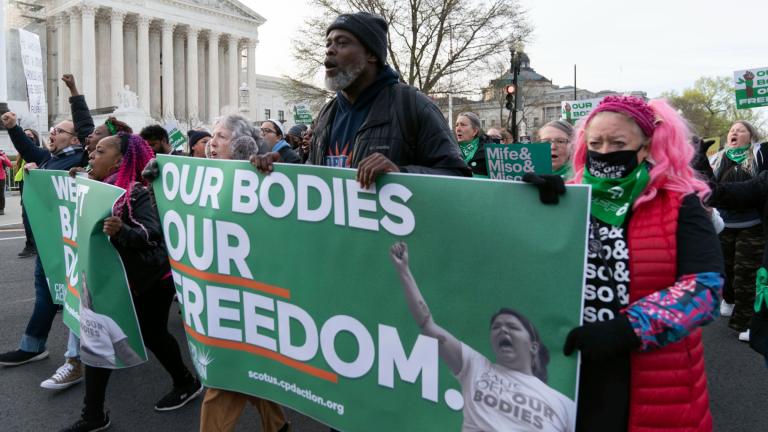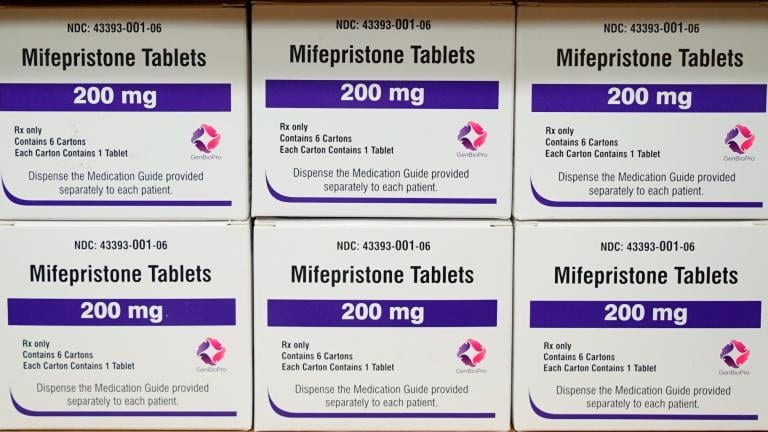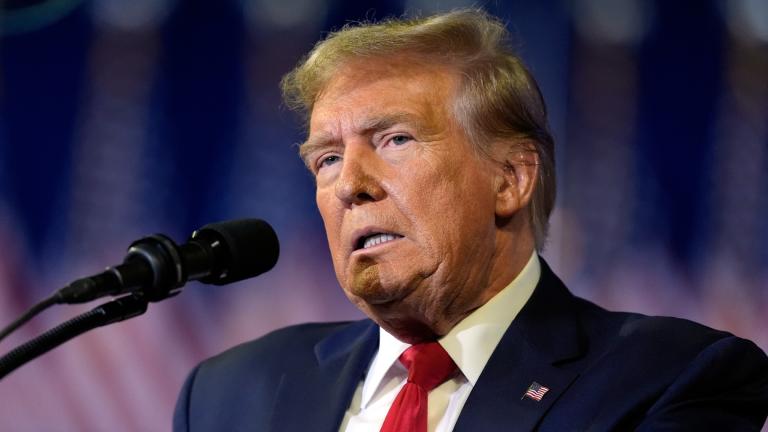UPDATE: Trump Picks Brett Kavanaugh for Supreme Court
President Donald Trump is expected Monday night to announce his nominee to replace Supreme Court Justice Anthony Kennedy.
“I have long heard that the most important decision a U.S. President can make is the selection of a Supreme Court Justice,” Trump wrote Monday morning on Twitter. The announcement is expected at 8 p.m. CST.
Less than two weeks ago, Kennedy, 81, announced he was retiring in a letter to Trump. Kennedy, who was appointed by President Ronald Reagan in 1988, has been a critical swing vote on several major issues, including reaffirming a woman’s right to an abortion in Roe v. Wade. But he’s also sided with conservatives throughout his tenure, including this term in the Janus v. AFSCME and Trump v. Hawaii rulings.
Ahead of Monday’s announcement, Trump has indicated he’s narrowed down the list of potential nominees to five finalists, including a Chicago judge.
Joining Chicago Tonight for a conversation about the reported front-runners are Carolyn Shapiro, co-director of the Chicago-Kent College of Law’s Supreme Court institute and former clerk for Justice Stephen Breyer; Michael Scodro, a partner at Mayer Brown who clerked for Justice Sandra Day O’Connor; and Clifford Berlow, a partner at Jenner and Block who’s part of the firm’s Appellate and Supreme Court practice and who clerked on the Tenth Circuit U.S. Court of Appeals.
Below, learn more about the potential nominees.
![]()
Raymond Kethledge
Judge, 6th U.S. Circuit Court of Appeals
Kethledge, 51, has sat on the 6th Circuit court since his 2008 appointment by then President George W Bush. Prior to his appointment, Kethledge worked in private practice in Michigan, focusing heavily on civil and commercial litigation, according to the SCOTUS blog.
Kethledge was born in New Jersey in 1966, but grew up in Michigan. He attended the University of Michigan, where he was a history major as an undergraduate. He also attended the University of Michigan law school, and graduated magna cum laude in 1993. After graduation, he served as a law clerk to Judge Ralph Guy on the U.S. Court of Appeals for the 6th Circuit. He also served as a clerk for Supreme Court Justice Anthony Kennedy.
Amy Coney Barrett
Judge, 7th U.S. Circuit Court of Appeals
Barrett, 46, was nominated by Trump to fill a vacancy on the 7th Circuit court in May 2017. She was confirmed by the Senate in October 2017. Barrett has been a professor at the University of Notre Dame Law School since 2002, teaching courses in constitutional law and statutory interpretation. Before joining the Notre Dame faculty, Barrett spent a year as a law and economics fellow at George Washington University.
Barrett grew up in Metairie, Louisiana, and attended St. Mary’s Dominican High School, a Catholic girls’ high school, according to the SCOTUS blog. She studied English at Rhodes College, graduating magna cum laude in 1994. She earned her law degree at Notre Dame in 1997, graduating summa cum laude. After graduation she served as a law clerk for Judge Laurence Silberman of the U.S. Court of Appeals for the D.C. Circuit from 1997 to 1998. She also clerked for the late Supreme Court Justice Antonin Scalia from 1998 to 1999.
Brett Kavanaugh
Judge, U.S. Court of Appeals for D.C.
Kavanaugh, 53, has served on the U.S. Court of Appeals for D.C. since his 2006 appointment by President George W. Bush and confirmation by the Senate. Prior to his appointment, Kavanaugh served Bush in the White House for more than five years as an assistant to the president and staff secretary to the president.
Kavanaugh was born in Washington, D.C., in 1965. He attended Georgetown Preparatory School, like Supreme Court Justice Neil Gorsuch, according to the SCOTUS blog. In 1987, he attended Yale College and three years later graduated from Yale Law School. Kavanaugh served as a clerk for Judge Alex Kozinski of the U.S. Court of Appeals for the 9th Circuit (1991-1992) and for Judge Walter Stapleton of the U.S. Court of Appeals for the 3rd Circuit (1990-1991). He also served as clerk for Supreme Court Justice Anthony Kennedy during the 1993 October term.
Thomas Hardiman
Judge, 3rd U.S. Circuit Court of Appeals
Hardiman, 53, has served on the court since 2007. Prior to his appointment, he served as a federal judge for the U.S. District Court for the Western District of Pennsylvania. Hardiman was reportedly considered to fill the vacancy caused by the death of Scalia in 2016. (Trump ultimately appointed Justice Neil Gorsuch to the post.)
He was the first person in his family to go to college, according to the SCOTUS blog. He graduated from the University of Notre Dame in 1987. He received his law degree at Georgetown University Law Center. After graduating law school, Hardiman worked in private practice for two years in Washington, D.C., before moving to Pittsburgh, where he practiced law until 2003.
Amul Thapar
Judge, 6th U.S. Circuit Court of Appeals
Thapar, 49, was nominated by Trump to 6th U.S. Circuit Court of Appeals in March 2017; he was confirmed by the Senate that May. Thapar, along with Hardiman, was one of the final frontrunners to fill the vacancy caused by the death of Scalia, according to the SCOTUS blog. Prior to his appointment to the appeals court, Thapar served as a federal judge for the U.S. District Court for the Eastern District of Kentucky. He also served as U.S. attorney for the Eastern District of Kentucky (2006-2007) and assistant U.S. attorney for the Southern District of Ohio (2002-2006).
He was born in Troy, Michigan, and grew up in Toledo, Ohio. Thapar graduated from Boston College in 1991 and received a law degree from the University of California, Berkley in 1994. He served as a law clerk to district court Judge C. Arthur Spiegel in Cincinnati, Ohio (1994-1996), and then to Judge Nathaniel Jones on the 6th Circuit (1996-1997).
Related stories
How Are Supreme Court Justices Selected and Approved?
Supreme Court Justice Anthony Kennedy to Retire
In Wake of Janus Decision, What’s Next for Public Unions

